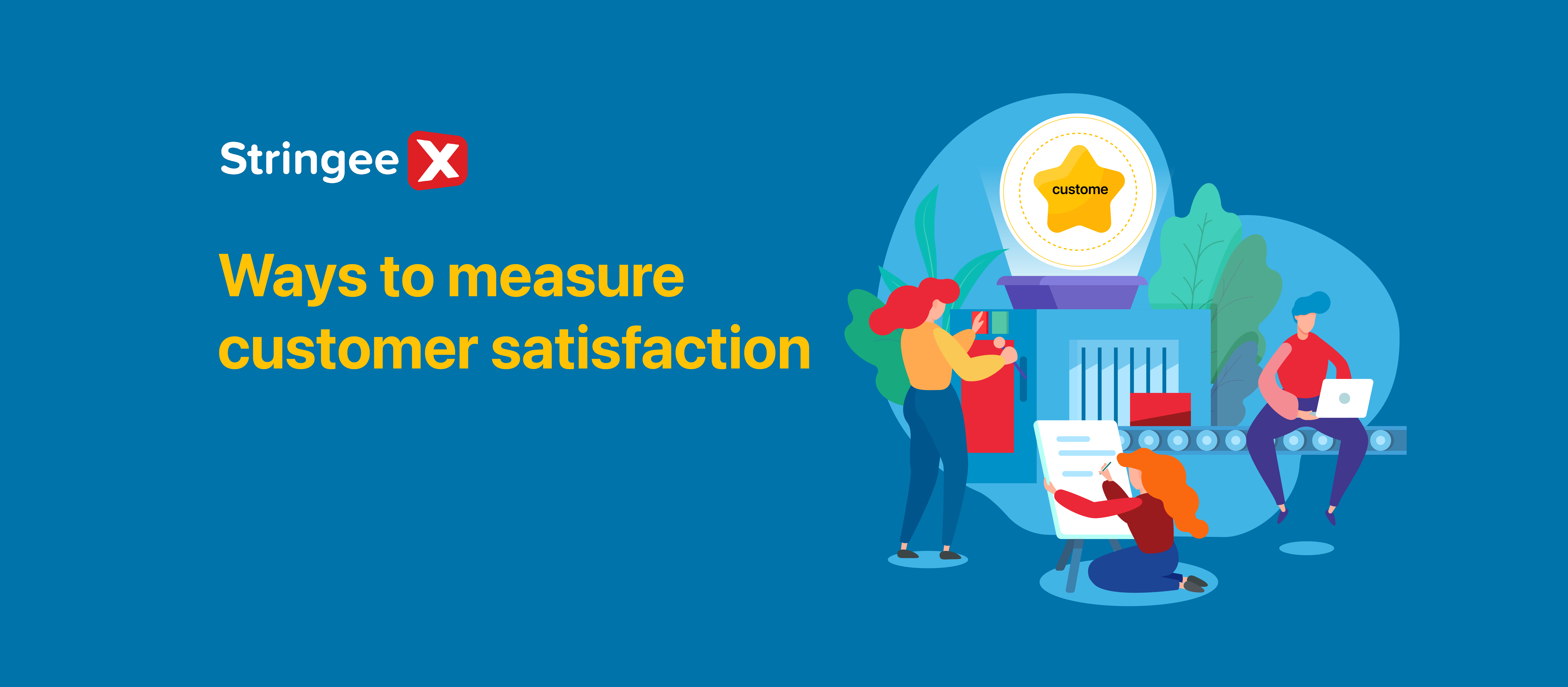Intro
Customer satisfaction is not just simple positive feedback or a five-star review on your website. It even involves your post-purchase support and strategies. Knowing this metric helps businesses refine their product and improve their customer service. There are many ways to measure customer satisfaction, but below are the seven most common methods. Scroll down to learn more!
7 Ways To Measure Customer Satisfaction
Customer Surveys
Hosting surveys is the easiest way to collect customer feedback. Source: Stockvault
Conducting surveys is a direct and easy way to collect feedback about your product or service. While asking what customers think of your products through your call centre can get their real-time feedback, you can host your surveys through 4 different methods:
In-app surveys
Pop-up surveys can be a double-edged knife because if they appear at the wrong time, they will frustrate customers, making them give negative feedback about your service. Not to mention, many tend to ignore or close such surveys, thinking they are annoying pop-up ads.
The ideal time to initiate these surveys is after each interaction, like post-delivery or post-purchase. The response rate at these times is higher, and their thoughts are likely genuine. You can employ third-party software, such as Zendesk or Qualtrics, to enable these in-app surveys.
Post-call surveys
Another type of customer satisfaction survey will be hosted right after a call is complete. After the call is over, customers tend to give honest comments that truly reflect your service. To make reviews, they only have to press a key or a number on their phone, streamlining the feedback collection process.
Email surveys
Email surveys are not reserved for first-time buyers but for the existing customer base who’ve made several purchases. It’s because the response rate is low for new customers.
You need to send a form-based email with insightful queries about your product/service. Ensure those inquiries link to the customers’ goal to receive valuable responses. To increase the response rate, you can offer a freebie, a bonus, or a small discount for each survey completed.
Voluntary feedback
When customers have either an extremely good or negative experience with your service or product, they might leave voluntary feedback to inform you about their thoughts. These online reviews prove valuable in pinpointing your strengths and areas of improvement.
Therefore, remember to reply to them with an automated yet tailored response or call them directly to express your appreciation and willingness to satisfy their needs.
After hosting large-scale surveys, you can calculate four major satisfaction KPIs based on those valuable insights:
Customer satisfaction score (CSAT)
The CSAT score is the most important metric that evaluates how good your product, service, and customer support are. To measure this KPI, you have to include a question like “How satisfied were you with our service/product?” The answer will be given on a 1-5 scale, with 5 representing “very satisfied” and 1 meaning “very dissatisfied.”
Once you collect all survey responses, follow this formula to calculate the metric:
The percentage of satisfied customers (CSAT) = The number of satisfied and very satisfied answers/the total number of responses.
For instance, among 100 customers, 70 of them voted 4 (satisfied) and 5 (very satisfied) for your service. Then, the percentage of satisfied customers or your CSAT score will be 70/100 = 70%.
Customer effort score (CES)
The CES score measures how effortlessly a customer can receive a response, get a solution, or complete a task. Since it represents the level of seamless customer experience, CES is also considered another KPI of customer satisfaction. The Zendesk Customer Experience Trends Report reveals that when businesses fail to address customer issues promptly, they can’t create customer loyalty.
To calculate this score, ask customers queries like “Our company made it easy for you to address your problem.” Again, the response will be based on a 1-5 scale, with 5 equaling “strongly agree” and 1 equivalent to “strongly disagree.”
With that data, you can apply this formula to measure CES:
The percentage of customers experiencing easy interactions (CES) = The number of positive answers (4 and 5) / The total number of responses.
For example, 75 out of 100 respondents gave either a 4 or 5 score, meaning your company gets a 75% CES.
Net Promoter Score (NPS)
Happy customers bring new buyers. Satisfied customers tend to recommend your brand to their family, friends, and relatives. So, the NPS score calculates how likely this is to happen.
You should ask relevant questions like “How likely are you to recommend our service/product/company to your family/friends/coworkers?” to measure this metric. Customers will leave answers from 1 to 5, with 5 meaning “very likely” and 1 meaning “very unlikely.”
Those with 4 and 5 ratings are considered promoters, while respondents with 1 and 2 ratings are called detractors, and those who scored 3 are passives. Follow these formulas to measure NPS:
The percentage of detractors = The number of detractors / The total number of respondents
The percentage of promoters = The number of promoters / The total number of respondents
NPS = The percentage of promoters - the percentage of detractors
Most businesses aim for a score of 50 or above. For instance, 100 customers completed your surveys. 75 respondents left 4 and 5 ratings, 15 are passives, and 10 gave 1 and 2 ratings. So, your NPS is 75 - 10 = 65% - an outstanding score.
Focus Groups And Advisory Boards
You can set up meetings to gather feedback. Source: Pix4free
Surveys can give you quick responses, but the lack of context somehow hinders your business from tracking down the reasons behind it. That’s when advisory boards and focus groups come in, offering a window into customers’ needs, behaviours, and motives.
Focus groups are one-time meetings, enabling customers to comment directly on your offerings. Meanwhile, advisory boards work similarly, but they are ongoing, regular rather than one-time meetings.
Here are the basic steps to set up an advisory board or focus group:
- Determine your objectives: Do you focus on your service and product, customer support, or other areas of improvement?
- Set a location and time for the meeting and develop an agenda, along with a follow-up meeting date, if any.
- Use social platforms, email lists, or ads to announce your meeting and attract participants.
- Record the meeting for reference.
Social Media
The reviews, messages, or even reactions customers leave on your social media platforms are great sources of customer satisfaction feedback. The engagement of your customers plays an important role in gauging their satisfaction:
Social sentiment score = (The number of positive reactions and comments - the number of negative reactions and comments) / the total number of reactions and comments x 100
Response Rates
Quick answers can somewhat influence how satisfied customers are with your service. Two customer satisfaction metrics that evaluate the response rate are:
- First response time: How long a customer has to wait before an agent responds to their request.
- Resolution time: How long does that agent need to address the issue?
Here are two formulas to calculate the two key metrics:
First response time = The time of request submission - the time of the first response after submitting the request
Resolution time = The total time of resolving all requests / the total number of requests
The response time can influence customer satisfaction. Source: Flickr
Customer Churn Rate
Churn rate is the percentage of customers who don’t come back to your service or product. To calculate this metric, follow this formula:
(The number of lost customers / the total number of customers) x 100
StringeeX has discovered the reasons behind a high churn rate, along with some effective solutions to boost retention rates. Click here for more information.
Email, SMS & Live Chats
Including a link to a survey question form in the newsletter is a good way to collect quality feedback from your existing customers. Similarly, live chats are a rich source of real-time reviews, providing actionable insights to inform your business’s decisions.
Surprisingly, SMS surveys have a high response rate of up to 45%, so you can employ these methods to gather more valuable feedback.
Web Intercepts
Web intercepts are similar to in-app surveys, but they eliminate the annoying pop-ups or redirects. This ensures your websites won’t lose traffic. Intercepts can be set up through scrolls, hovers, or clicks.
How To Improve Customer Satisfaction
Besides upgrading your product quality, improving customer support is an effective way to increase the customer satisfaction score. An omnichannel contact centre from StringeeX will assist you in delivering a consistent customer experience with seamless transitions and 24/7 support.
Multiple touchpoints and efficient routing enable your business to shorten resolution time while providing tailored solutions. All ensure customers are happy and encourage them to return to your product/service.
Conclusion
Surveys are the easiest and most effective approach among various ways to measure customer satisfaction. Follow the formulas above to gauge your score and develop appropriate strategies to improve it. If you need more help, StringeeX is always here!










